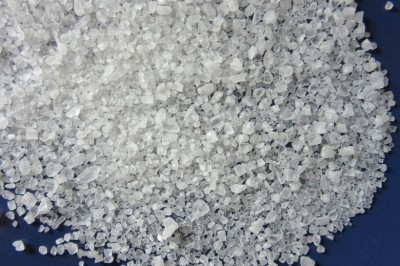The Importance Of Food Elements
The effects of food are to promote growth, provide the strength and warmth, and provide equipment for the repair of waste is carried out continuously in the body. Every breath, every thought, every movement, performs part of the delicate and wonderful house in which we live.
Several vital processes remove these worn and useless particles and maintain the bodys health, the loss must be repaired constantly renewed by the supply of suitable material to replace worn and damaged tissues. This renewal of equipment must be supplied by food and drink, and the best food that is desired by the end that can be more easily and perfectly done. The great diversity of characters of different tissues of the body, requires that food must contain a variety of items so that each part can be well nourished and restored.
The food items.
The various elements found in food are as follows: starch, sugar, fat, albumen, mineral substances, indigestible substances.
Digestible food elements are often grouped according to their chemical composition, into three classes., Carbon, nitrogen and inorganic compounds. The class includes carbon starch, sugar and fat, the nitrogen, all albuminous elements, and includes inorganic minerals.
Starch is only found in plant foods, grains, most vegetables and fruits, contain starch in abundance. Several types of sugar are made in the laboratory of nature, sugar cane, grapes, fruit, milk and sugar. The first is obtained from sugar cane, the sap of maple trees and the root of beet. Grape sugar and fruit are found in most fruits and honey. Milk sugar is a component of milk. Glucose, an artificial sugar, similar to grape sugar, is now largely manufactured by subjecting the starch of corn or potatoes to a chemical process, but it lacks the sweetness of natural sugars, and is not a substitute for them. Albumen is found in its pure form, uncombined state in the white of an egg, which is almost entirely composed of albumin. There is, in combination with other elements of food, in many other foods, both animal and vegetable. There is plenty of oatmeal, and to some extent in other grain and vegetable juices. All natural foods contain elements which, in many respects resemble albumen, and are so closely related to the convenience that are generally classified under the general heading of "albumin. Chief among them is gluten , found in wheat, rye and barley. Casein, found in peas, beans and milk, beef and fibrin, are the elements of this class.
Fats are found in foods of animal and plant origin. Animal fats, butter and tallow are examples. On a vegetable fat is abundant in nuts, peas, beans, many of these grains, and some fruits such as olives. Provided by nature in nuts, legumes, cereals, fruit and milk, this element is always in a state of subdivision, whose state is the one that best suits your digestion. As commonly used, fat such as butter, lard, etc., is not only difficult of digestion itself, but often interferes with the digestion of food to other elements mixed with it. Was certainly never intended that fats should be changed from its natural condition and separated from other foods and items to be used as a separate article of food. The same is true of other elements of carbon, sugar and starch, and that, when used alone, is capable of supporting life, but when combined in a natural way and with other elements of food, making a large role in the nutrition of the body. Most foods contain a percentage of mineral elements. Cereal and milk to provide these elements in abundance. Cellulose, wood or fabric, vegetables, sounds and wheat are examples of indigestible elements, but which can not be converted into blood in tissue, serve an important purpose by giving food in bulk.
With the exception of gluten, none of the elements of food, when used alone, is capable of sustaining life. A true food substance contains some elements of food, the quantity of each variable in the different foods.
Using elements of the meal.
Regarding the purpose of serving the different elements have been demonstrated by the experience of eminent physiologists that the elements of carbon, which usually include most of the food, three effects on the body;
1. Provide for the production of heat;
2. Are a source of strength when taken in conjunction with other elements of the food;
3. To replenish the fatty tissues of the body. Among the elements carbon, starch, sugar and fat, to produce as much heat as a function of quantity, ie, more heat is developed from a pound of fat than of equal weight of sugar or starch, but this apparent advantage is more than offset by the fact that fats are much more difficult of digestion, which are carbon and other elements, so proud to provide sufficient material for body heat would be much more productive of corruption in excess and cause a disease of the digestive organs. The fact that nature has a much broader provision of starch and sugars of natural fats in the diet of humans, suggest that they were destined to be the main source of carbon for food, however , fat, taken in the proportion supplies and nature are important components of food.
Nitrogen, in particular food items to feed the brain, nerves, muscles, and all assets and more vitalized tissues, and also serve as a stimulus to the development of tissues. Therefore we can say that a diet deficient of these cells is a poor diet.
Inorganic elements, which are the head of phosphates in the carbonates of potassium, sodium and lime, aid in the provision of construction materials needed for bones and nerves.
A good combination of foods.
While it is important that our diet should contain some elements of food, animal experiments and humans show that it is necessary that these elements, especially nitrogen and carbon, are used in certain specific proportions, as the system is only able to appropriate a certain amount of each and all the excesses, particularly nitrogenous elements, is not only unnecessary but even harmful, since to rid the system of surplus places a task to the digestive system and excretory. The relative proportion of these elements necessary to constitute a food that meets the requirements of the system, is a six carbon to nitrogen. Scientists have devoted much study and experimentation to determine the amounts of foods from each of the elements necessary to the daily diet of people in different conditions, and it became commonly accepted that the nitrogenous material which should be one sixth of the nutrients, approximately three ounces is all that you can use twenty-four hours, for a healthy adult of average weight, with a slight amount of work. Many food products are, however, deficiencies in one or other of these elements, and must be supplemented with other items containing gaps in superabundance, since to use a system in which one element nutrients they need, but in May bulk of all digestive organs can handle, it is hunger in the time and opportunity for serious results.
Therefore, it is clear that great care must be taken in the selection and combination of foods. This knowledge is of paramount importance in the training of cooks and housewives, as it corresponds to the selection of food for daily needs of the family, and should include not only foods that best fit those needs but how to combine, in accordance with physiological laws.
We provide you with many free tips on Health, Beauty, Weight Loss and Fitness, come in and learn, Beautify yourself. Beauty Tips Video Conferencing Information For You



























